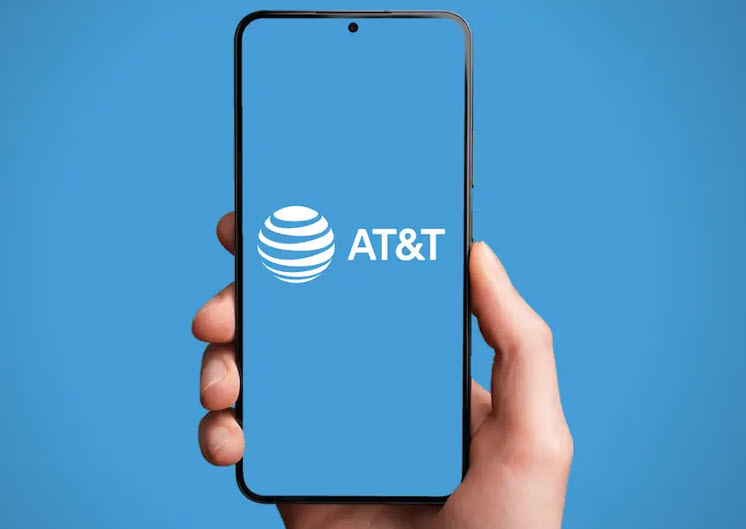In the vast landscape of mobile networks, choosing the right carrier and ensuring your device is compatible can be a daunting task. If you’re considering AT&T or already an AT&T subscriber looking to bring your own device or switch carriers, understanding compatibility is crucial. This comprehensive guide delves into the intricacies of AT&T compatibility, covering a range of topics from network technology and phone compatibility to the diverse world of Mobile Virtual Network Operators (MVNOs) that utilize AT&T’s network.
Understanding AT&T’s Network Technology

Before we dive into phone compatibility, it’s essential to grasp the technology behind AT&T’s network. AT&T primarily operates a GSM (Global System for Mobile communications) network. GSM is one of the two dominant mobile communication technologies globally, the other being CDMA (Code Division Multiple Access). This distinction is vital because phones designed for CDMA networks might not function correctly on GSM networks, and vice versa.
Key Takeaway: If you’re bringing a phone to AT&T, ensure it’s GSM compatible.
Checking Phone Compatibility with AT&T
AT&T provides a comprehensive list of devices that have been tested and approved for their network. This list, often updated, can be found on the AT&T website. However, even if your phone isn’t on the list, it might still be compatible. Here’s a step-by-step guide to check your phone’s compatibility:
- Identify Your Phone’s Model Number: This information is usually found in your phone’s settings under “About Phone” or a similar label.
- Check AT&T’s Compatibility List: Cross-reference your phone’s model number with the list on AT&T’s website.
- Verify Network Compatibility: Ensure your phone supports GSM technology and the necessary frequency bands used by AT&T.
- Unlock Your Phone: If you’re bringing a phone from another carrier, ensure it’s unlocked to function on AT&T’s network.
Key Takeaway: While AT&T’s list provides a good starting point, it’s not exhaustive. Always double-check network technology and frequency band compatibility.
What Phone Companies are Compatible with AT&T? Exploring MVNOs
Beyond AT&T itself, numerous Mobile Virtual Network Operators (MVNOs) utilize AT&T’s network infrastructure. These companies offer a wide range of plans and services, often at more competitive prices than AT&T’s direct offerings. If you’re looking for flexibility and affordability, exploring MVNOs is a worthwhile endeavor.
Popular MVNOs that use AT&T’s network include:
- Cricket Wireless: A well-established MVNO offering a variety of affordable plans with nationwide coverage.
- Consumer Cellular: Caters primarily to seniors, providing flexible plans and excellent customer service.
- Straight Talk: Offers a diverse range of plans, including unlimited data options, and supports a wide variety of phones.
- H2O Wireless: Provides flexible and affordable plans with international calling options.
Key Takeaway: MVNOs can be an excellent alternative to AT&T, offering competitive pricing and plan options while utilizing the same reliable network.
Benefits of Using AT&T Compatible Phones and Carriers
Choosing an AT&T compatible phone and carrier offers several advantages:
- Extensive Coverage: AT&T boasts one of the largest and most reliable networks in the United States, ensuring connectivity across a vast area.
- 5G Access: AT&T is actively expanding its 5G network, offering compatible devices access to faster speeds and improved network performance.
- Device Variety: A wide range of phones, from budget-friendly to flagship models, are compatible with AT&T’s network.
- MVNO Options: The availability of numerous MVNOs provides flexibility and choice in terms of plans and pricing.
Key Takeaway: Compatibility with AT&T opens doors to a reliable network, 5G access, diverse device options, and competitive MVNO plans.
Factors to Consider When Choosing an AT&T Compatible Phone and Carrier
While compatibility is crucial, it’s not the sole factor to consider. Here are some additional aspects to keep in mind:
- Budget: Determine your budget for both the phone and the monthly service plan.
- Data Needs: Assess your data usage requirements and choose a plan that aligns with your needs.
- Phone Features: Consider specific features that are important to you, such as camera quality, battery life, and processor speed.
- Customer Service: Research the carrier’s reputation for customer service and support.
Key Takeaway: Evaluate your individual needs and priorities to make an informed decision about the best AT&T compatible phone and carrier for you.
Troubleshooting Compatibility Issues
Even with careful consideration, you might encounter compatibility issues. Here are some troubleshooting steps:
- Check for Network Updates: Ensure your phone’s network settings are up-to-date.
- Restart Your Phone: A simple restart can often resolve minor connectivity glitches.
- Contact Customer Support: If issues persist, reach out to your carrier’s customer support for assistance.
- Verify IMEI Compatibility: Use AT&T’s IMEI checker tool to confirm your phone’s compatibility with their network.
Key Takeaway: Don’t hesitate to seek assistance if you face compatibility challenges. Customer support and online resources can provide valuable guidance.
Conclusion
Navigating the world of phone compatibility can be complex, but understanding the fundamentals of AT&T’s network technology and the diverse options available empowers you to make informed decisions. Whether you’re opting for AT&T directly or exploring the realm of MVNOs, ensure your phone is compatible and aligns with your individual needs and preferences. By considering factors such as network technology, frequency bands, and carrier options, you can unlock a seamless and satisfying mobile experience.
لا تعليق